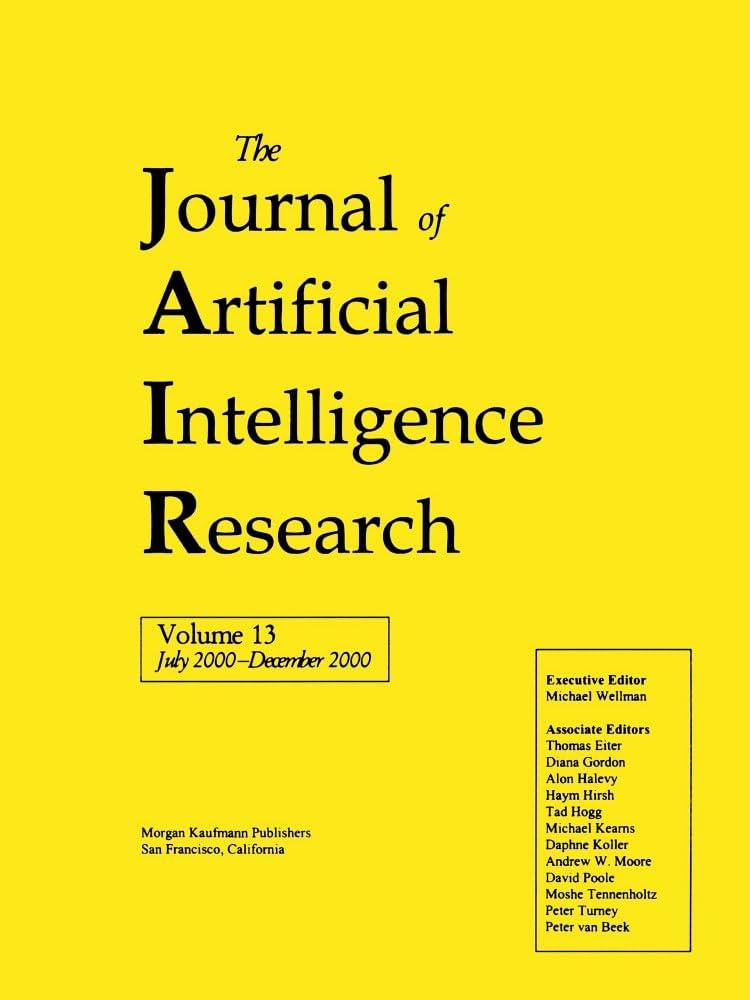用民间行为概念诊断人工智能解释方法
IF 4
3区 计算机科学
Q2 COMPUTER SCIENCE, ARTIFICIAL INTELLIGENCE
引用次数: 11
摘要
我们研究了一个成功解释人工智能的条件的形式主义。我们认为“成功”不仅取决于解释包含什么信息,还取决于被解释者从中理解了什么信息。心理理论文献讨论了人类用来理解和概括行为的民间概念。我们假设,民间的行为概念为我们提供了一种人类理解行为的“语言”。我们使用这些民间概念作为人类解释者的社会归因框架-人类可能从解释中理解的信息结构-通过引入解释性叙述的蓝图(图1),用这些结构解释人工智能行为。然后,我们证明了今天的许多XAI方法可以映射到定性评估中的民间行为概念。这使我们能够发现它们的失效模式,这些模式阻碍了当前方法的成功解释。即任何给定的XAI方法所缺少的信息结构,包含这些信息结构可以减少误解AI行为的可能性。本文章由计算机程序翻译,如有差异,请以英文原文为准。
Diagnosing AI Explanation Methods with Folk Concepts of Behavior
We investigate a formalism for the conditions of a successful explanation of AI. We consider “success” to depend not only on what information the explanation contains, but also on what information the human explainee understands from it. Theory of mind literature discusses the folk concepts that humans use to understand and generalize behavior. We posit that folk concepts of behavior provide us with a “language” that humans understand behavior with. We use these folk concepts as a framework of social attribution by the human explainee—the information constructs that humans are likely to comprehend from explanations—by introducing a blueprint for an explanatory narrative (Figure 1) that explains AI behavior with these constructs. We then demonstrate that many XAI methods today can be mapped to folk concepts of behavior in a qualitative evaluation. This allows us to uncover their failure modes that prevent current methods from explaining successfully—i.e., the information constructs that are missing for any given XAI method, and whose inclusion can decrease the likelihood of misunderstanding AI behavior.
求助全文
通过发布文献求助,成功后即可免费获取论文全文。
去求助
来源期刊

Journal of Artificial Intelligence Research
工程技术-计算机:人工智能
CiteScore
9.60
自引率
4.00%
发文量
98
审稿时长
4 months
期刊介绍:
JAIR(ISSN 1076 - 9757) covers all areas of artificial intelligence (AI), publishing refereed research articles, survey articles, and technical notes. Established in 1993 as one of the first electronic scientific journals, JAIR is indexed by INSPEC, Science Citation Index, and MathSciNet. JAIR reviews papers within approximately three months of submission and publishes accepted articles on the internet immediately upon receiving the final versions. JAIR articles are published for free distribution on the internet by the AI Access Foundation, and for purchase in bound volumes by AAAI Press.
 求助内容:
求助内容: 应助结果提醒方式:
应助结果提醒方式:


